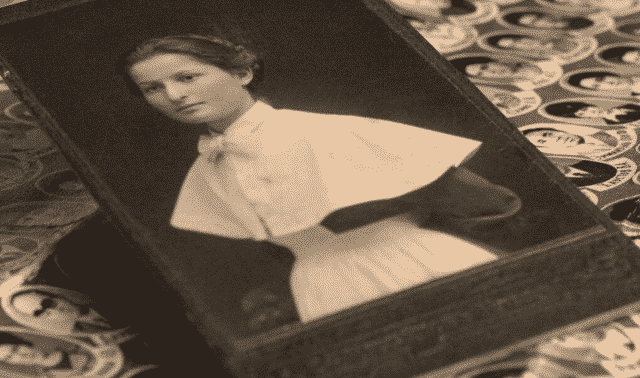
One day, Nancy Hogan’s mother asked her to find out a little more about her dinnerware. Nancy knew her parents married in 1947 and that her mother bought the set in Macy’s on a pre-wedding shopping trip to New York City with her mother. The dishes were what the young couple could afford at the time and were intended to be a “temporary” set of everyday dishes until a better set could be purchased.
As so often happens, her parents used these dishes throughout their marriage and eventually gave them to Nancy along with a colorful yellow bowl. Nancy’s quest for more information led her to become a collector of American dishes. In a single moment, she saw dishes as more than serving plates—they became her passion.
Learning about your dishes is not difficult. There are a few definitions that will help you understand your dinnerware. First, pattern refers to the decal in the center of the plate, while the theme is the shape of the design around the edge. The markings on the back of the individual pieces are the trademark.
By examining her mother’s dishes, Nancy discovered that they were made by Homer Laughlin. Consulting books about Laughlin, she found they were part of the Theme series in eggshell ivory. The mark on the bottom, N43N5, designated their origin in 1943. Theme, designed by Frederick Rhead, began production in 1939 with the characteristic raised fruit and flower design. During World War II, European china was unavailable, so Laughlin’s wares increased in popularity. In 1941, a full 32-piece set of Theme sold for a mere $4.98. Nancy’s mother once owned a full set, complete with square luncheon plates, but Nancy has only one completely unblemished plate left; the rest of the dinner plates are cracked and worn.
As for the little yellow bowl, it turned out to be valuable both as a collectible and as a family heirloom. It was made in Boston by the Saturday Evening Girls, a social experiment of the Arts and Crafts movement that created opportunities for young immigrant women. A group of young Jewish and Italian immigrant women made these ceramics beginning in 1907 at the Paul Revere Pottery, as part of a project founded by librarian Edith Guerrier and funded by philanthropist Helen Osborne Storrow. The pottery was first located at 18 Hull St. in Boston’s North End and eventually moved to Nottingham Hill in Brighton, Mass., in 1915 until it ceased operation in 1969. The marks on the bottom of Nancy Hogan’s bowl are “S.E.G.” for the Saturday Evening Girls; the date of manufacture, “12/14” (December 1914); and “S.G.” for Sara Galner, a well-known Arts and Crafts designer. On the inside is a saying: “O don’t bother me said the hen with one chick” and the name “Betsy.” That name and the manufacturing date signify this as a birthday present for the 1-year-old Elisabeth, Nancy’s mother.
To research your own dishes, start by turning over the item and examining the mark on the bottom. Try to find it in reference books on the company. Go online and see if you can find other material by typing the name of the company into a search engine. I found several Web sites by searching on Homer Laughlin. Nancy actually found an antique shop that specialized in Saturday Evening Girl pottery. While the owners wanted to purchase the piece, the sentimental value outweighed the collectible worth. Be sure to ask other family members:
- When was it purchased?
- Who owned the set?
- When was it used?
As for Nancy Hogan, her collection of American ceramics has grown, but she still mourns the loss of the pieces of her mother’s set that didn’t survive daily use. While she buys new styles, she’s always watchful for replacements to re-create her mother’s set.
For additional information on Homer Laughlin ceramics, visit the Homer Laughlin China Collectors Association Web site www.hlcca.org and consult The Collector’s Encyclopedia of Homer Laughlin China by Joanne Jasper (Collector Books). A history of Laughlin China derived from Jasper’s book is online. To find out more about the Saturday Evening Girls pottery, visit the Society for the Preservation of New England Antiquities Web site. Also, search Antiqnet to find similar pieces to buy, read articles, post a note on the message board and find a show or dealer in your area.



